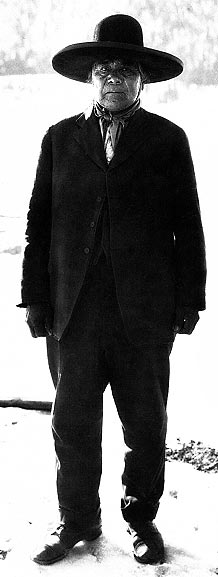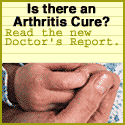[Much of the following information was obtained through
The National Necrotizing Fasciitis
Foundation and
Center for
Disease Control.]
Necrotizing fasciitis is a bacterial infection. These bacteria attack
the soft tissue, usually in an extremity following minor trauma. There are
also many cases of this occurring after surgery, and most often abdominal
surgery.
NNFF can tell you about people who contracted
it after a c-section, after abdominal surgery, after scratching a rash, after
giving birth vaginally, from a scratch, after bumping a leg with a golf bag,
after a friendly punch in the arm from a buddy, after a little cut on the
finger, after a cut on the foot, after a rug burn, after having a routine
blood draw in a physical exam, after a broken arm, and after a broken leg,
and from no known trauma at all.
The bacteria are introduced from a person carrying Strep Type A or from an
area where Strep Type A is present. These bacteria are the same as those
that cause "Strep throat." However, there are various strains of the bacteria,
some of which are more powerful than others (with stronger m-protein serotypes).
The name "flesh-eating-bacteria" is a little sensational, but essentially,
the bacteria do "eat flesh." They attack the subcutaneous (soft) tissue,
which then becomes gangrenous. Infection moves swiftly, usually under the
skin, where it is unobservable. Once tissue becomes necrotic (dead), it has
to be removed.
Few people who come in contact with a virulent strain of GAS will develop
invasive GAS disease; many will have a routine throat or skin infection,
and most will have no symptoms whatsoever. Although healthy people can get
invasive GAS disease, those with chronic illnesses like cancer, diabetes,
and kidney disease requiring dialysis and those who use medications such
as steroids are at higher risk. In addition, breaks in the skin, like cuts,
wounds, or chickenpox may provide an opportunity for the bacteria to enter
the body.
If diagnosed very early, tissue loss can be "relatively" small, and surgery
would be less severe, with removal of flesh, subcutaneous tissue, and fat
only. The bacteria usually will not attack muscle or bone. In more advanced
cases, major limb amputation is necessary. Death from this condition is not
uncommon; however, many people are successfully treated.
In addition to the tissue decay, the bacteria causes the rest of the system
to go into systemic shock. This may result in respiratory failure, heart
failure, low blood pressure and renal failure. Basically, every system of
the body can fail as a result of the severe infection and toxicity of the
system.
Prompt treatment is essential due to the speed with which the infection spreads.
Unfortunately, symptoms of Necrotizing fasciitis resemble influenza
("the flu"), and most people delay treatment. No major trauma is necessary.
In fact, the condition often occurs following minor trauma, or even a bruise
or abrasion. As mentioned above, it can occur after surgery. In any case,
the symptoms are the same.
Often after treatment is sought, misdiagnosis or delayed diagnosis occurs.
Even in the hospital following surgery many cases have gone unrecognized
until it was too late to save the patient. In the early stages, Necrotizing
fasciitis may be indistinguishable from typical acute cellulitis, yet
prompt diagnosis is essential because it correlates strongly with a more
favorable outcome.
Here are some of the symptoms to look for in the general order in which they
occur as the condition advances:
-
Trauma of some type (however slight)
-
Discomfort in the general region of the trauma
-
Increased pain/tenderness; the pain is out of proportion in relation to the
injury
-
Flu-like symptoms: vomiting, diarrhea, dehydration, general malaise, weakness,
muscle pain, and fever
-
Swollen tissue and/or redness; affected area feels hot and very painful
-
Condition worsens without any improvement of the above conditions
-
Less frequent urination
-
Potential appearance of a sunburn-type rash
-
Large, dark boil-like blister(s) may or may not form
-
Possibility of shock
When seeking medical help, be sure to call these symptoms to the attention
of medical personnel. This minimizes the risk of a delayed diagnosis if indeed
the symptoms are those of Necrotizing fasciitis.
The single, most important preventative measure is keeping the skin intact!
Next is cleanliness. Always wash even the smallest opening in the skin and
apply an antibiotic ointment. Buy tubes of antibiotic ointment and keep one
in your car, your desk, your exercise bag, and at home.
The spread of all types of GAS infections may be reduced by good handwashing,
especially after coughing and sneezing, before preparing foods and before
eating. Persons with sore throats should be seen by a doctor who can perform
tests to find out whether it is "strep throat"; if so, the person should
stay home from work, school, or day care until 24 hours or more after taking
an antibiotic. All wounds should be kept clean and watched for possible signs
of infection: increasing redness, swelling, drainage, and pain at the wound
site. A person with signs of an infected wound, especially if fever develops,
should seek medical care.
Be respectful to protect others from infection if you suspect that you may
have a Strep infection, such as Strep throat, or have been exposed to someone
with a known Strep infection. Carriers of the disease will not necessarily
exhibit symptoms.
According to
New
Scientist: "A rare form of the horrific "flesh-eating" disease... may
be on the upsurge in Canada, infectious disease specialists warn. Five cases
caused by group B Streptococcus have appeared in Montreal since April 1996.
Only four had been documented worldwide in the past 40 years."
In late 1996, Donald E. Low, MD and colleagues reported in the New England
Journal of Medicine that children with chickenpox have among the highest
risks for invasive group A streptococcal (GAS) disease. For children younger
than 10, the investigators estimated that those who have chickenpox are at
39 times higher risk for invasive GAS infections than those who do not have
chickenpox, according to researchers. Among children younger than 10 who
have chickenpox, the attack rate for invasive GAS infections was 4.4 per
100,000 cases of chickenpox.
Strep A Kills 26 in Texas
AUSTIN, Texas, March 6 (UPI) _ The Texas Department of Health says an outbreak
of group A streptococcal disease that began Dec. 1 has now claimed the lives
of 26 people.
According to updated statistics released today, 117 Texans have been stricken
by the potentially deadly bacterial disease, with the cases clustered mostly
in the Houston, San Antonio and Austin areas.
The latest victim was a 71-year-old man, who died Wednesday at an Austin
nursing home.
Dr. Steven Harris of the Austin/Travis County Health and Human Services
Department said the elderly man had a moderate strain of the bacterial infection
that usually isn't fatal, and that age was likely a factor in his death.
The Health Department report said the 26 dead include 17 adults and nine
children. Ten of the deaths were in Harris County, six were in Travis and
two were in Bexar.
Since last Saturday, the department has logged more than 1,200 calls from
people with questions about the recent outbreak of group A strep. The agency
says the hot line will remain open as long as there's a demand.
Health experts say they don't know what caused the outbreak that began Dec.
1 or why it affects different patients in different ways. But since the
prevalence of the disease is seasonal, they say the number of cases will
decline with the approach of spring.
In some patients, strep A causes no more than a sore throat, while in others,
it progresses to more serious and fatal stages. In its most virulent form,
the bacteria can cause the infamous ``flesh-eating'' disease.
Copyright 1998 by United Press International.
Further Resources
Miracle
Victory Over the Flesh-Eating Bacteria
by David L. Cowles
Emerging and Reemerging Viruses
WWW Links
National Necrotizing Fasciitis Foundation
Mayo Clinic
Minimizes Risks
NY State
Department of Health
Texas Department of
Health Hotline
World of Diseases (Warning:
Graphic Photos)

























